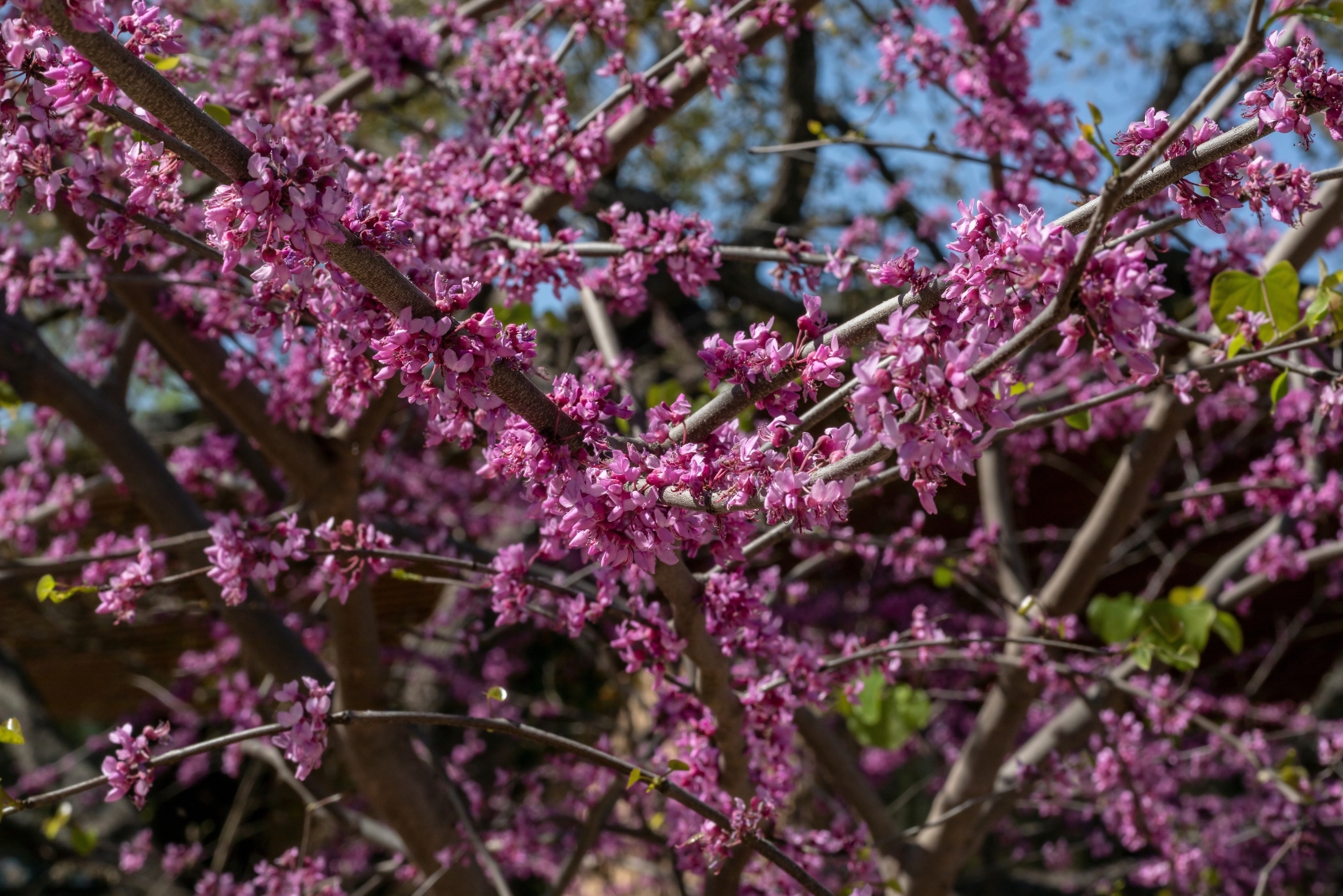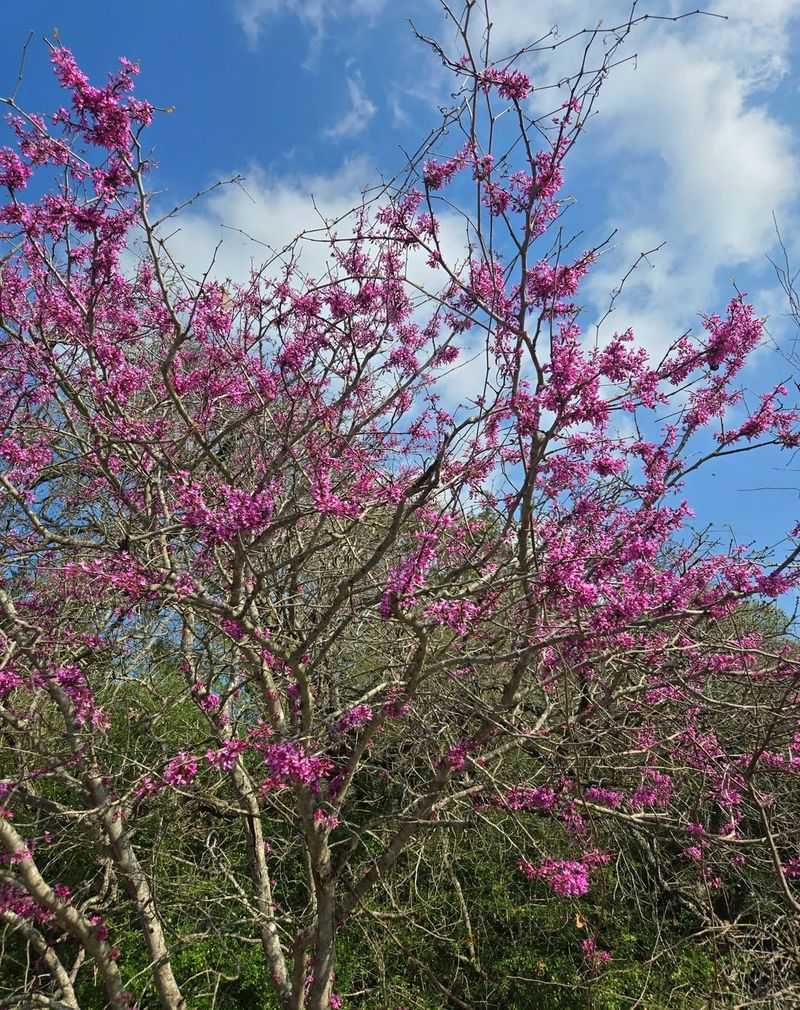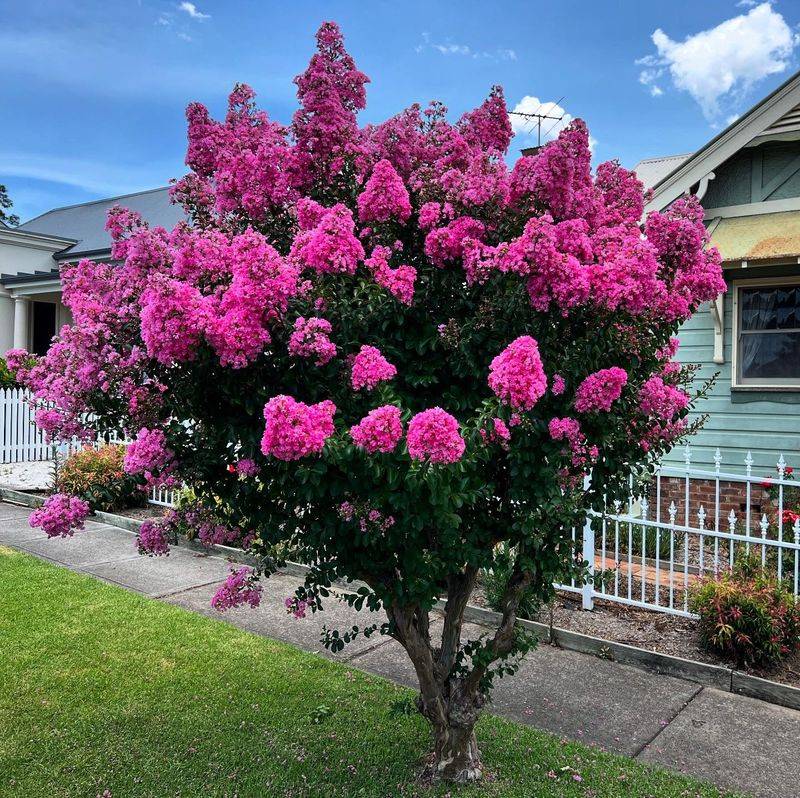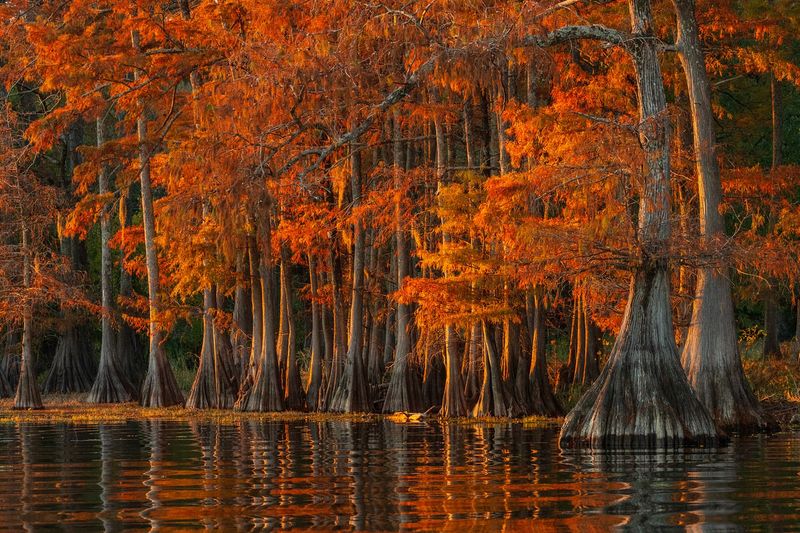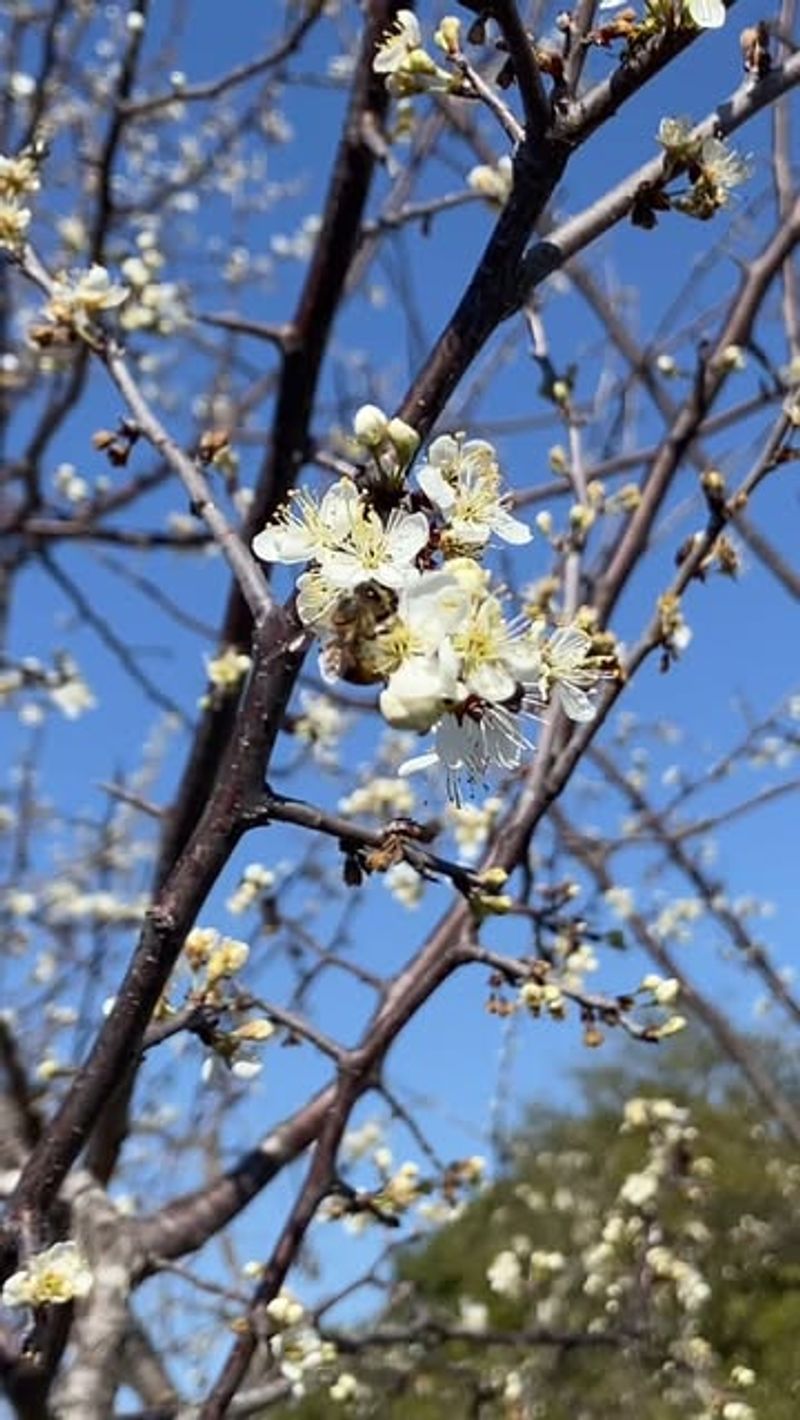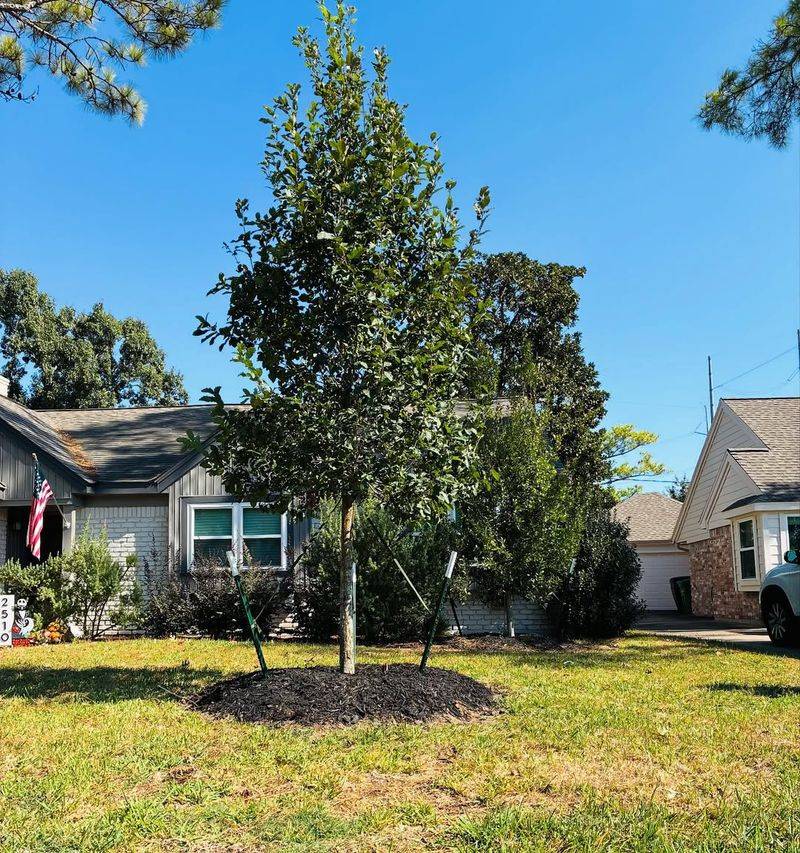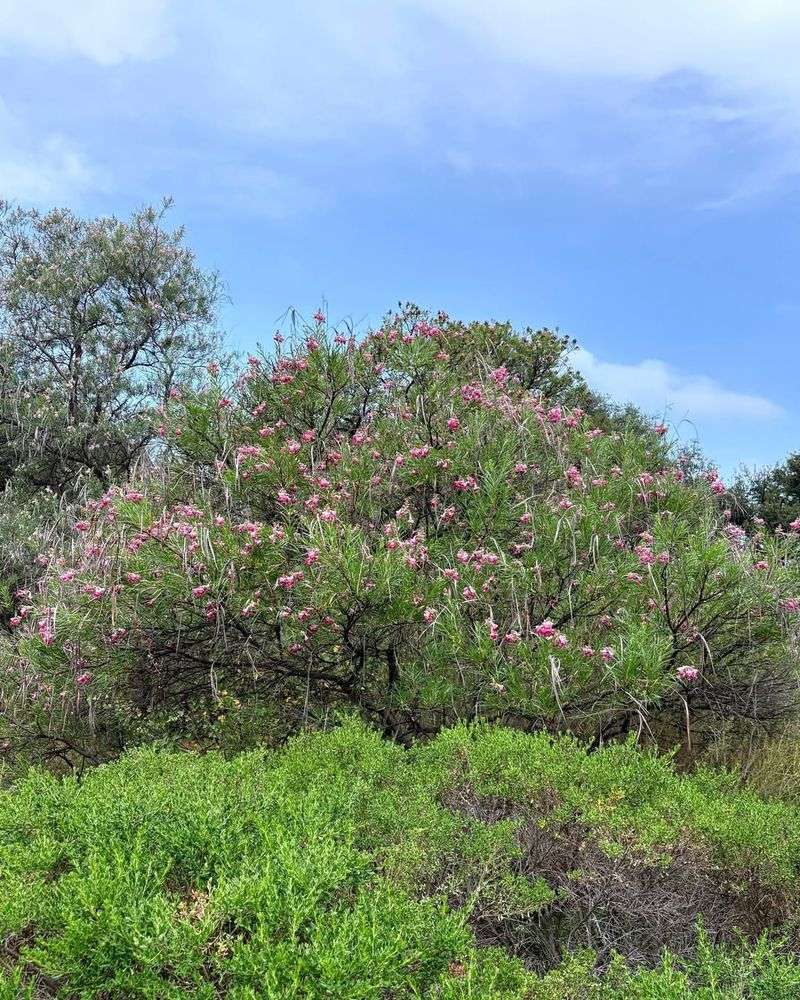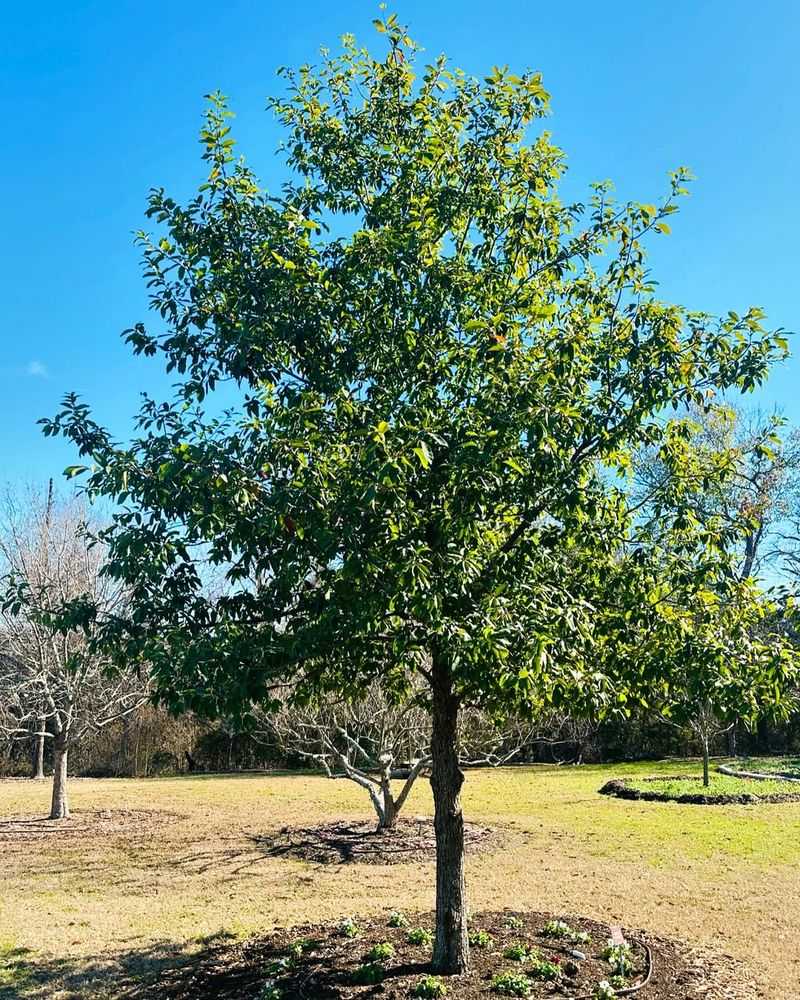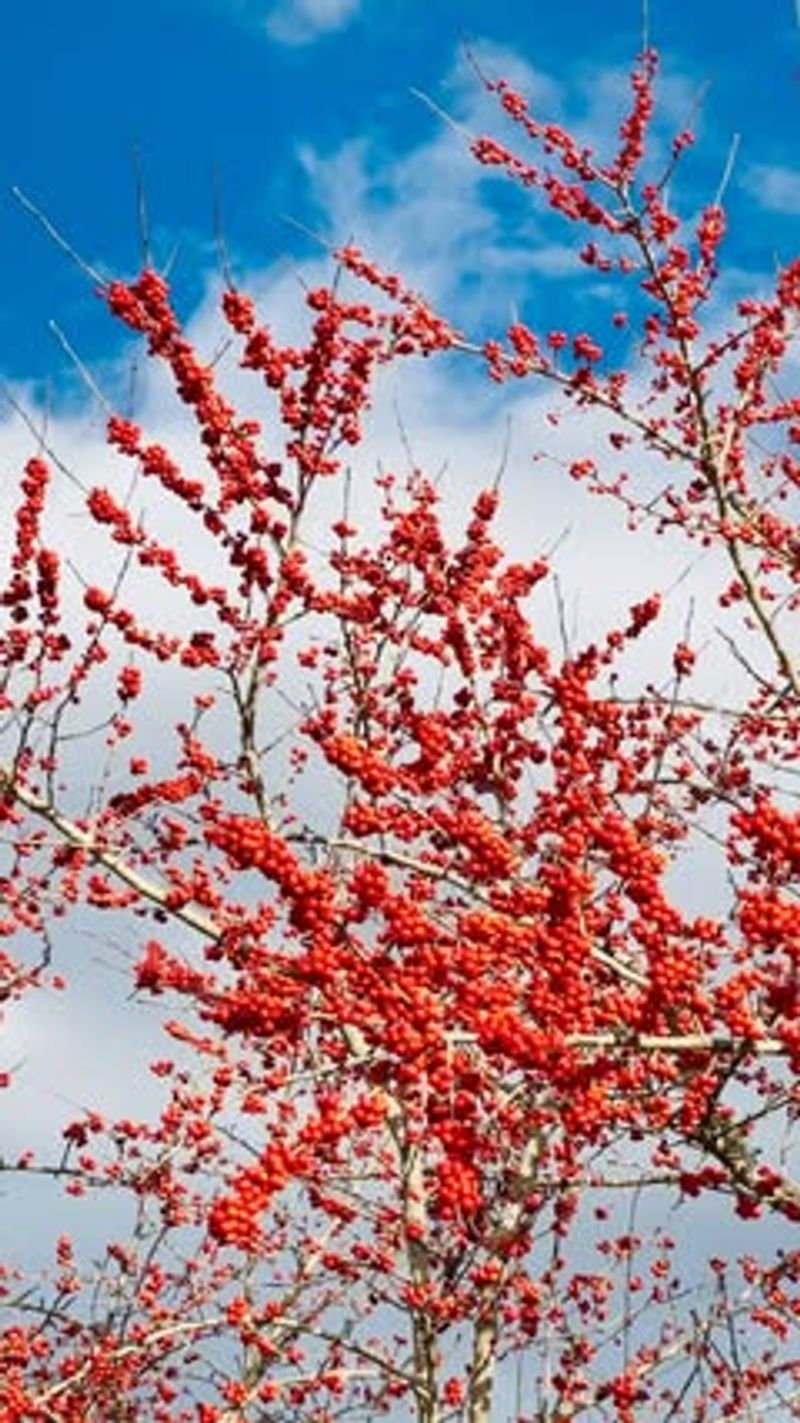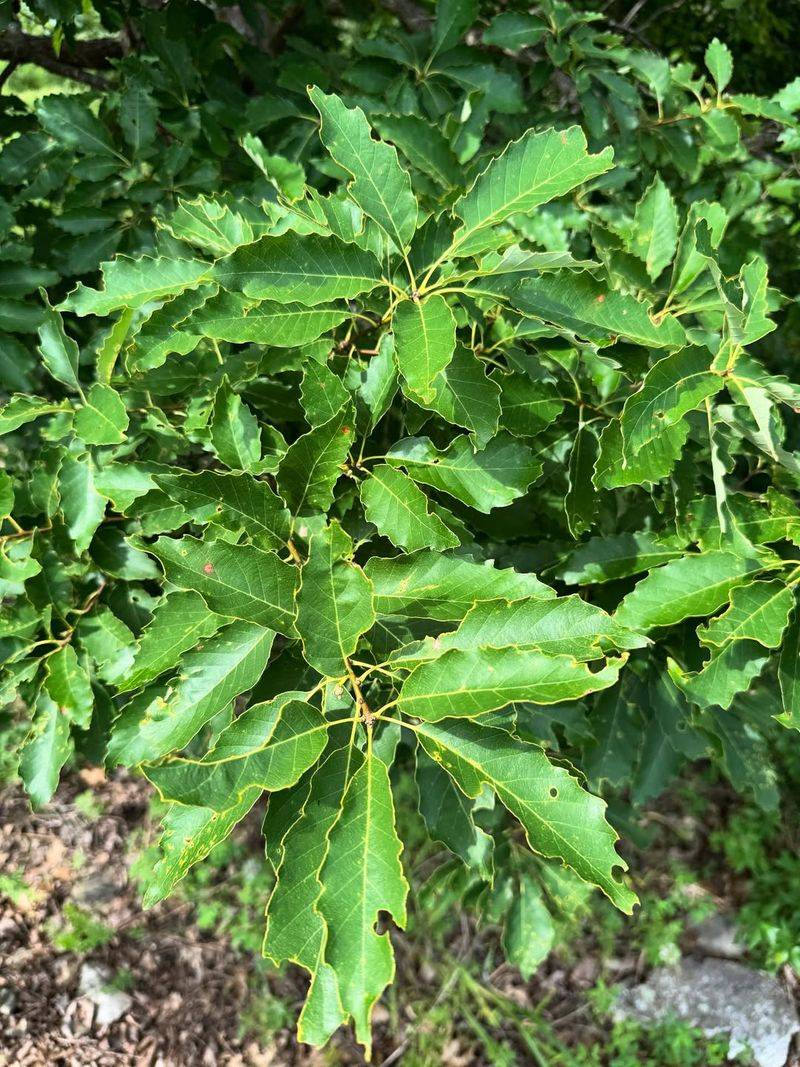Texas has so many trees that stay gorgeous all year, and I still get excited every time I spot one that refuses to look dull. Some of them glow in spring, some stay lush in the heat, and a few keep their charm even when winter shows up.
It’s the kind of steady beauty that makes a yard feel loved without much fuss. Let me show you the standouts that truly shine in every season.
1. Live Oak
Picture a tree so iconic that it practically defines Texas landscapes. Live oaks grow slowly but reward patience with incredible strength and shade that cools entire yards.
Their evergreen leaves stay put year-round, meaning your property never looks bare. Texans love how these giants handle drought once established, making them low-maintenance champions.
Acorns drop in fall, attracting wildlife and adding natural charm to your outdoor space throughout the seasons.
2. Texas Redbud
When winter finally loosens its grip, this native beauty explodes with magenta flowers before leaves even appear. It’s like nature’s fireworks show right in your yard!
Growing to a manageable size, redbuds fit perfectly in smaller Texas landscapes without overwhelming the space. Heart-shaped leaves emerge after blooms fade, providing gentle shade through summer and turning golden by autumn.
Butterflies and bees adore the early nectar, making your garden buzz with life each spring morning.
3. Cedar Elm
Tough as nails, cedar elms laugh in the face of Texas heat and poor soil conditions. Homeowners appreciate how adaptable these natives are, thriving where other trees struggle.
Small leaves create a fine-textured canopy that filters sunlight beautifully without creating heavy shade. Fall brings a surprising twist when tiny purple flowers appear, followed by yellow foliage.
This tree handles urban pollution well, making it ideal for city lots across the state where air quality varies.
4. Crape Myrtle
Few trees deliver such spectacular summer color as crape myrtles, which bloom for months in shades of pink, purple, red, or white. Their smooth, peeling bark adds winter interest when branches stand bare.
Texas gardeners can choose from dwarf varieties or towering specimens, depending on space. Fall foliage turns brilliant orange and red before dropping, giving you four distinct seasonal looks.
Hummingbirds visit the flowers regularly, adding movement and excitement to your landscape throughout the growing season.
5. Bald Cypress
Don’t let the name fool you—this deciduous conifer sports gorgeous feathery foliage that turns coppery-bronze each autumn. Native to Texas wetlands, it surprisingly tolerates drier conditions once roots establish.
The pyramid shape adds formal elegance to yards, while the interesting bark texture provides year-round visual appeal. Knobby knees sometimes emerge near the base, creating conversation-starting features.
Wildlife finds shelter in the dense branches, and the rusty fall color rivals any maple tree you’ve seen.
6. Mexican Plum
Early spring transforms this small tree into a cloud of fragrant white flowers that perfume entire neighborhoods. Texas native plant enthusiasts treasure it for attracting pollinators when few other food sources exist.
Dark purple plums ripen in summer, delighting both people and birds with their tart sweetness. Glossy leaves and peeling bark keep the tree attractive through all seasons.
Compact size makes Mexican plum perfect for courtyard gardens or underneath power lines where larger trees won’t fit safely.
7. Shumard Oak
Forget wimpy trees that barely survive Texas summers—Shumard oaks power through heat with impressive vigor. Their deep root systems tap moisture other trees can’t reach, ensuring survival during drought.
Glossy green leaves provide dense summer shade, then stage a spectacular autumn show with brilliant scarlet color. Acorns feed squirrels and deer, connecting your yard to the broader ecosystem.
Fast growth for an oak means you won’t wait decades to enjoy substantial shade across your property in Texas.
8. Desert Willow
Orchid-like blooms seem too exotic for a drought-tolerant tree, yet desert willows deliver exactly that combination. Trumpet-shaped flowers in pink, purple, or white appear throughout summer, attracting hummingbirds constantly.
Narrow leaves and airy structure give this tree a graceful appearance that softens harsh Texas landscapes. It thrives in challenging conditions, asking little water once established in the ground.
Seed pods dangle decoratively in winter, adding texture when most gardens look dormant and lifeless across the state.
9. Monterrey Oak
Faster-growing than its live oak cousin, Monterrey oak still provides that classic evergreen presence Texans love. Smooth gray bark contrasts beautifully with glossy leaves that catch sunlight year-round.
This adaptable tree handles various soil types and doesn’t demand constant attention once roots spread. New growth emerges with a coppery tint before maturing to deep green.
Drought tolerance improves each year, eventually creating a low-water shade tree perfect for sustainable Texas landscapes that conserve resources naturally.
10. Flameleaf Sumac
When autumn arrives in Texas, flameleaf sumac sets hillsides ablaze with fiery red and orange foliage. This small native tree adapts to rocky, poor soils where pampered ornamentals would perish.
Creamy flower clusters in summer give way to fuzzy red fruit clusters that birds devour eagerly. Compound leaves create interesting texture, distinguishing it from typical tree shapes.
Cold tolerance combined with heat resistance makes this tree a four-season performer, even in unpredictable Texas weather patterns throughout the year.
11. Possumhaw Holly
Winter reveals this tree’s true magic when leaves drop and brilliant red berries glow against bare branches. Native to Texas wetlands, possumhaw surprisingly tolerates average garden conditions.
Deciduous habit surprises people expecting evergreen holly, but the berry display more than compensates. Birds feast on the fruit during cold months, bringing life to winter yards.
Small white flowers bloom discreetly in spring, and light green summer foliage provides a soft backdrop before the spectacular berry show begins again.
12. Chinkapin Oak
Unusual among oaks, chinkapin leaves resemble chestnut foliage with their distinctive serrated edges and lighter undersides. This Texas native handles alkaline soils that frustrate many other tree species.
Golden-yellow fall color brightens landscapes before leaves drop, and sweet acorns attract wildlife from miles around. Moderate growth rate means you see progress without the tree outgrowing its space too quickly.
Drought tolerance develops over time, eventually creating a self-sufficient shade tree that thrives with minimal intervention across the state.

